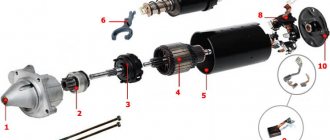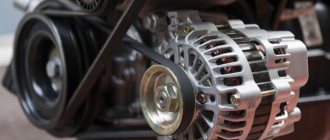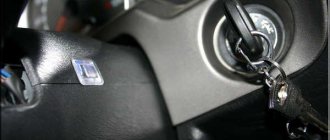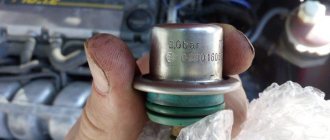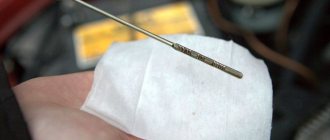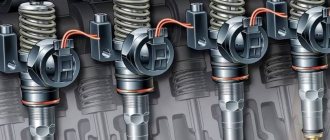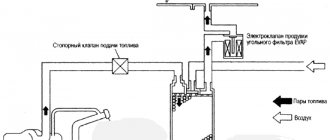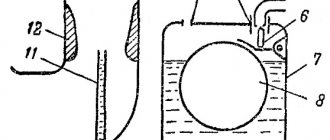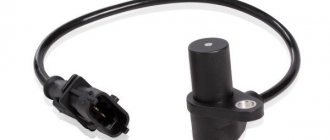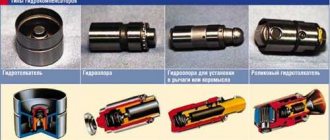Windshield wiper system
Standard windshield wipers are designed to remove dirt, dust, and excess sediment from its surface. This allows you to increase visibility of the road at any time, including bad weather conditions: heavy rain or snow. For greater efficiency, the device is combined with a windshield washer, which sprays a special washer fluid under high pressure onto the glass surface. Thus, the glass is cleaned from adhering dirt and insects.
Automotive windshield wipers
Some cars have a rear windshield wiper, as well as special devices for cleaning the headlights (washers). This allows you to ensure traffic safety in all weather conditions. The frequency and duration of operation of the windshield wipers is regulated by the driver from the passenger compartment.
How does a windshield wiper work in cyclic mode?
The windshield wiper is functional when the wiper blades make one movement within 10 seconds, which of course makes driving a car much easier during drizzling and heavy rain. This mode is available for any car; to do this, it is enough to use the PC514 relay from a VAZ car.
Windshield wiper relay wiring diagram. How does the windshield wiper relay work?
1 – relay RS 514; 2 – two-pole toggle switch; 3 – wire; 4 – windshield wiper; 5 – windshield wiper limit switch; terminal designations; Zh – yellow; B – white; K – red; C – blue.
Relay 1 has 4 pins. The plus of the on-board network is transmitted to the yellow wire, the two-pole toggle switch is connected to the red and blue wires. In order to ensure that the wiper blades stop, the non-grounded contact must be connected to wire 3.
In this case , the wiper will operate in cyclic mode when the toggle switch is moved down. Although you can buy a special windshield wiper cycle regulator, with which you can select the cycle of operation from 2 to 15 seconds.
Windshield wiper design elements
Design features depend on the type of device and the type of fastening elements. The standard windshield wiper circuit consists of the following parts:
- lever drive (trapezoid);
- leashes;
- relay for controlling operating modes;
- electronic control unit (if equipped);
- electric motor with gearbox;
- hinged fastenings;
- brushes
Design of windshield wipers
Additionally, control devices are provided. For example, for manual control, a steering column switch for windshield wiper operation modes is used, and for automatic mode, a special electronic control unit and a sensor for analyzing glass contamination (rain sensor) are installed in the vehicle.
How the device works
Despite the simple functionality of the cleaning system, it is necessary to understand how windshield wipers work. Key details you need to know:
- The electromagnetic relay receives the control command and sets the operating mode of the brushes. Depending on the vehicle, the wipers may operate intermittently at short intervals of 3-5 seconds, continuously move at a set speed, or enter wash mode with the washer on.
- The windshield wiper motor receives power from the on-board electrical system. The exact connection diagram depends on the car model.
- The windshield wiper arms, and along with them the glass cleaning brushes, are driven by an electric motor with a worm gear and a lever drive (trapezoid). The trapezoid transmits and converts rotational motion from the electric motor to brushes, which, pressing tightly against the working surface, remove dirt and moisture from the glass.
A properly configured system should not leave streaks or mechanical damage on the surface of the glass, or make noise during operation. In case of such problems, it is necessary to promptly eliminate the malfunction.
How does a trapezoid work?
The windshield wiper trapezoid consists of a system of rods and levers that convert the rotational movement from the gearbox into the reciprocating movement of the leads with brushes. A standard device should perform the following functions:
- movement of the brushes when the windshield wiper motor is running;
- ensuring the required amplitude and speed of cleaning;
- Windshield wiper arms with two or more blades must move synchronously.
Windshield wiper trapezium
The trapezoid, like the electric motor, is an important component of the system. In case of any malfunctions (the appearance of backlashes) in its operation, the efficiency and quality of glass cleaning deteriorates. For greater reliability, the trapezoid elements are made of sheet steel, which is resistant to aggressive environments and also has high bending rigidity.
Depending on the design of glass wipers, trapezoids can be one-, two-, or three-brush, and according to the principle of operation, they can be symmetrical or asymmetrical.
Wiper motor
The windshield wiper motor has a basic design regardless of the car model. The main elements include the electric motor itself and the gearbox (usually a worm gear), which increases the force from the electric motor several times. Modern devices can be equipped with additional elements, including fuses for protection against heavy loads, heating elements for operation at low temperatures, and much more.
Windshield wiper motor for VAZ 2110
The windshield wiper gear motor is the most important element of the system, which ensures its performance. The brushes must fit tightly to the glass and move freely along it, otherwise there will be an increased load on the electric motor.
The principle of operation of the drive, engine and other mechanism components
If the circuit and design of the windshield wiper do not raise any questions, let’s move on to the next point - the principle of operation. The windshield wiper holder, together with the blade mounted on it, moves left and right, which allows you to almost completely clean the windshield. As stated above, using the switch, the driver can adjust the speed at which the wiper blade holder will move. Some modern cars are equipped with hidden cleaners. In this case, the windshield wiper mechanism is installed under the windshield, and when the driver needs to turn on the wipers, the device pushes up this mechanism, which, after being turned off, “hides” back.
In general, windshield and rear window cleaners are almost identical products, but there are differences in their operation. For example, the windshield wiper blade holder can only operate in one mode, without the possibility of adjustment. That is, if the front wipers are part of a whole system that includes many elements and a control unit, then the rear wiper has only one function. One of the main components of the washer is a pump designed to activate the system’s electric motor.
Let's briefly consider the principle of operation of the system:
- The driver presses the steering column switch, giving the control unit a signal to turn on the wipers and also supply water.
- Through the operation of the electric motor, the liquid begins to be transmitted through hoses through nozzles to the windshield or rear window.
- The windshield wiper blade holder begins to rotate under the influence of an electric motor, to which the control device has sent a signal - at what speed the holders should move.
- With a short-term supply of liquid, a certain volume is applied to the glass. When the water stops flowing, the wipers continue to work for some time, usually 1-3 strokes (the author of the video is the Volkswagen channel RUS-LAN center).
Purifier management
The windshield cleaning system can be controlled in two ways - electronic and electrical. The last option involves manually changing operating modes. Under the steering wheel there is a special control lever that allows you to turn on the device, adjust the pause in the wipers and change the cleaning modes. But this option requires constant driver participation.
Understeering's shifter
The electronic control system is completely autonomous and does not require human intervention. The car is equipped with a special electronic unit and a rain sensor, which analyzes the cleanliness of the glass and weather conditions. Electronic control provides a range of functions:
- automatic switching on and off;
- changing the operating parameters of the purifier;
- blocking the motor in the presence of obstacles on the windshield;
- additional cleaning with windshield washer;
- preventing brushes from freezing when the engine is off.
For the diagram “Timer in the windshield wiper control unit”
The timing units of various windshield wiper control devices are, as a rule, built on unijunction transistors or their analogues, the main disadvantage of which is unreliable locking with a low resistance of the charging resistor. The use of the integrated timer KR1006VI1 in the timing unit in combination with a powerful output transistor allows one to eliminate this very drawback. The device ensures continuous operation of the windshield wiper for approximately 3 s (two wiper cycles). The pause between cycles can be adjusted within 0.5...20 s. The windshield wiper is controlled by a variable resistor mounted on the vehicle's dashboard. The schematic diagram of the timer is shown in Fig. 1... See description of the circuit...
Types of brushes
Car manufacturers provide car owners with a choice of brush types. Depending on the design and operational characteristics, they can be of the following types:
Frame brushes
- Frame brushes are the best and affordable option. They adapt well to the working surface of the windshield, but deteriorate the quality of cleaning at sub-zero temperatures and high speeds.
- Frameless wipers are a more expensive option that provides high-quality glass cleaning. The device is more resistant to freezing and also lasts longer. Among the disadvantages, it is necessary to note the difficulty of selecting brushes to ensure proper fit to the glass.
- Hybrid windshield wipers - these are often called winter wipers due to their closed design and moisture resistance. Ideal for regions with low temperatures, where it is important to ensure the functionality of the cleaning system.
Frameless wipers
Heated
p, blockquote 23,0,0,0,0 —>
In recent years, heated wiper blades have become increasingly popular. For a number of motorists, it is precisely these “wipers” that are seen as an ideal option for the winter cold.
p, blockquote 24,0,0,0,0 —>
This statement is partly justified, because such a windshield wiper does not freeze even in severe frost and effectively copes with its duties due to the fact that the temperature of the blade (mainly its working surface) is significantly higher than the ambient temperature. Rubber does not lose its properties, ice melts, and in general, at first glance, there are only advantages.
p, blockquote 25,0,0,0,0 —>
p, blockquote 26,0,0,0,0 —>
The design of electrically heated brushes is not anything extraordinary. The difference between these “wipers” is a thin heating element in the area of the brush blade, connected to the car’s electrical network through a relay.
p, blockquote 27,0,0,0,0 —>
In general, it is the need for integration into the power grid that is the disadvantage of the solution, since installing brushes is quite complicated and requires special skills.
p, blockquote 28,0,0,0,0 —>
In addition, in the summer, the advantages of such brushes are no longer so obvious and their performance properties do not differ at all from conventional, much cheaper, wiper models.
p, blockquote 29,0,0,0,0 —>
Methods for attaching brushes
Before 1999, most car manufacturers used a type of mounting for OEM windshield wiper blades called a "hook" or "hook". This is a universal device in the shape of the letter “U”, which allows you to snap the brush into place and not worry about the reliability of its installation. The following types of mounts are currently gaining popularity:
- Side pin - appeared in 2005 on BWM, Volvo and other cars. Allows brushes to be fixed using a special 22 or 17 mm side pin.
- Button or “Push Button” is an adapter for standard 16 mm wide wiper blades. It is enough to snap the device into place for fastening, and to remove it you need to press a special button.
- Pin lock - fixation of brushes using a special built-in lock. Used in Audi cars.
“Push Button” mounting scheme
This is not a complete list of types of fastenings. Each manufacturer can use their own designs for fixing brushes.
Despite the relative simplicity of windshield wipers, it is difficult to imagine a modern car without them. Drivers can control the operation of the wipers directly from the cabin, remove dirt and improve visibility of the road situation. And electronic systems automatically monitor the cleanliness of the glass, increasing the comfort and safety of driving without human intervention.

